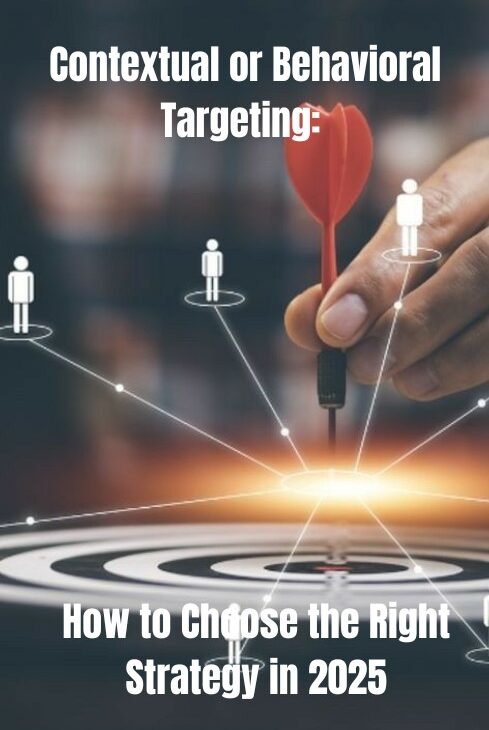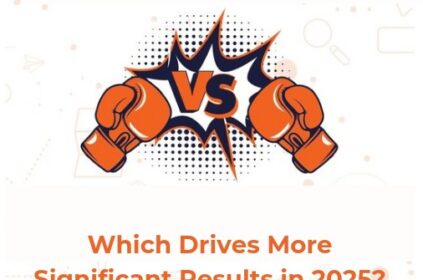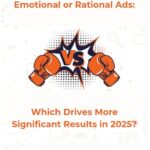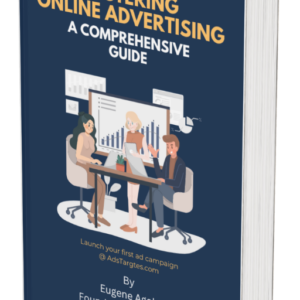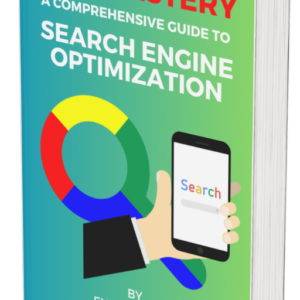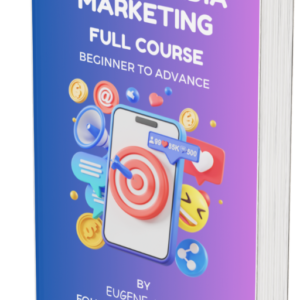In 2025, advertisers face one of the biggest questions in digital marketing: contextual or behavioral?
With privacy laws tightening, cookies fading, and audience expectations evolving, the debate has never been more relevant.
Both targeting methods promise precision and relevance, but they achieve it in very different ways.
Choosing between contextual or behavioral targeting isn’t just about trends — it’s about aligning with user trust, brand integrity, and measurable returns.
The advertising ecosystem has shifted dramatically. Users demand transparency. Regulators demand compliance.
Platforms prioritize privacy. In this new reality, understanding whether contextual or behavioral targeting will drive better engagement is crucial for sustainable growth.
Marketers who still rely solely on third-party data are quickly realizing that audiences have moved on.
People want value, not intrusion; relevance, not retargeting fatigue.
And, that’s what we’re here to take about.
Understanding the Core of Contextual or Behavioral Targeting

To make an informed decision, marketers must first understand what differentiates contextual or behavioral targeting.
Contextual targeting delivers ads based on the content a user is currently viewing. If someone is reading an article about electric vehicles, they might see ads for charging stations or hybrid cars.
The ad aligns with the context, not the user’s personal data.
Behavioral targeting, on the other hand, relies on past actions — browsing history, search intent, and engagement patterns.
It uses tracking data to predict what the user might want next. Someone who searched for “best running shoes” last week might be shown sportswear ads days later across unrelated websites.
In 2025, the line between contextual or behavioral targeting is thinning.
With AI-driven systems analyzing both page content and anonymized user patterns, hybrid models are emerging.
However, the philosophical difference remains the same: one respects current context; the other leverages behavioral history.
What makes contextual or behavioral targeting fascinating is how their effectiveness depends on the environment.
For publishers emphasizing content quality, contextual targeting enhances ad harmony without privacy concerns.
For eCommerce and retargeting-heavy brands, behavioral targeting still offers unmatched personalization — though with increasing compliance risks.
As privacy-first strategies rise, the pendulum seems to swing toward contextual. Yet behavioral data, when handled ethically, continues to provide valuable insights.
The balance between contextual or behavioral targeting, therefore, defines the modern marketer’s agility and understanding of audience psychology.
The Evolution of Privacy and Its Impact on Contextual or Behavioral Strategies
The digital advertising world changed forever the moment third-party cookies began their decline.
Chrome’s phase-out, following Safari and Firefox, forced brands to rethink how they collect and activate audience data.
Suddenly, marketers had to revisit contextual or behavioral strategies through a new privacy lens.
Behavioral targeting — once the crown jewel of precision marketing — has taken a reputational hit.
The very data it thrives on is now harder to collect and legally sensitive.
Regulators across Europe, the U.S., and beyond are enforcing strict consent requirements under GDPR, CCPA, and newer privacy frameworks.
Tracking individuals across devices and platforms is no longer straightforward, and the cost of compliance is rising fast.
Meanwhile, contextual targeting has emerged as the privacy-safe alternative. It doesn’t need cookies or personal data.
Instead, it interprets page content, tone, and relevance signals to match ads seamlessly. For brands striving to maintain user trust, contextual or behavioral choices increasingly favor the former.
AI has supercharged this trend. Modern contextual engines use natural language processing (NLP) and computer vision to analyze meaning, emotion, and visual context — far beyond simple keyword matching.
As a result, contextual or behavioral trade-offs now look different: contextual ads can be equally, if not more, relevant than behaviorally targeted ones.
Still, dismissing behavioral data entirely would be premature. First-party data, loyalty programs, and privacy-compliant tracking can keep behavioral targeting viable.
The key in 2025 is integration — building strategies that combine the strengths of contextual or behavioral systems under clear ethical boundaries.
Performance Metrics: Which Delivers Higher ROI in 2025?
When evaluating contextual or behavioral targeting, performance is where the debate gets serious.
Historically, behavioral targeting outperformed contextual ads in click-through rates (CTR) and conversion rates due to its precision. But 2025 tells a different story.
Recent studies show contextual targeting closing the gap — and in some sectors, surpassing behavioral.
Users are becoming more receptive to ads that match their current intent, rather than those that follow them endlessly.
Contextually aligned ads are perceived as helpful, not creepy. This shift has translated into improved engagement and higher quality traffic.
Behavioral targeting still shines in retargeting and upselling scenarios, where brand familiarity drives action.
However, its dependence on data collection and tracking introduces inefficiencies. Ad blockers, privacy preferences, and limited cross-device tracking all erode behavioral accuracy.
Advertisers optimizing for long-term ROI must now weigh whether contextual or behavioral targeting aligns with their customer journey.
Contextual targeting often drives stronger top-funnel awareness and trust, while behavioral remains valuable for bottom-funnel conversions — provided it’s compliant and transparent.
The smartest advertisers in 2025 don’t treat contextual or behavioral as rivals but as complements.
Contextual placements attract new, privacy-comfortable audiences. Behavioral data, when used responsibly, nurtures and converts them.
Together, they form a full-funnel strategy that aligns relevance with respect — the true currency of modern marketing.
AI and Automation: Redefining Contextual or Behavioral Targeting
Artificial intelligence is transforming how marketers use contextual or behavioral targeting.
Automation tools can now analyze massive data sets, predict consumer intent, and adjust bids dynamically — all in real time. But the key lies in how AI is applied.
In contextual systems, AI improves ad placement by understanding semantics, image recognition, and even video context.
Instead of matching keywords, it interprets topics and emotional tone.

A travel brand can ensure its ads appear next to uplifting vacation stories, not next to news about flight cancellations.
This precision elevates contextual or behavioral performance without privacy trade-offs.
For behavioral targeting, AI enhances segmentation. Machine learning models study user journeys to identify micro-patterns that humans might miss — like subtle browsing habits or time-based intent spikes.
However, the challenge in 2025 is ensuring that this intelligence remains compliant. Transparency and explainability have become must-have features for AI-driven behavioral engines.
The most advanced marketers blend contextual or behavioral algorithms into adaptive frameworks.
They let AI decide — based on real-time data — whether a contextual match or a behavioral signal should drive a specific impression.
This hybrid automation delivers precision with protection, aligning personalization with privacy.
As AI continues to mature, it will make contextual or behavioral systems smarter, faster, and more efficient.
But technology alone won’t guarantee results. The winners will be brands that train their AI on ethical data, continuously test creative performance, and prioritize contextual harmony over invasive persistence.
Brand Safety, Trust, and the Psychology of Relevance
Trust has become the foundation of digital advertising. Consumers no longer tolerate ads that feel intrusive or irrelevant.
This is where contextual or behavioral strategies diverge dramatically in emotional impact.
Behavioral ads, while accurate, often trigger resistance. When users feel “tracked,” they associate the brand with surveillance.
Contextual ads, by contrast, blend naturally into their environment. They align with the content’s theme, offering value instead of distraction.
This difference in perception directly affects click behavior, dwell time, and brand recall.
In 2025, brand safety is no longer optional. A misplaced behavioral ad on sensitive or controversial content can damage reputation instantly.
Contextual targeting’s page-level control minimizes this risk. Advanced platforms even allow sentiment analysis, ensuring ads only appear in positive or neutral environments.
Marketers must evaluate whether contextual or behavioral methods better preserve brand tone and trust.
For industries like finance, healthcare, and education — where credibility is everything — contextual targeting has become the preferred option.
It conveys empathy and understanding, not intrusion.
Ultimately, success depends on emotional resonance. An ad that appears where users are already engaged in related content builds connection effortlessly.
That’s why more advertisers now treat contextual or behavioral decision-making as a trust strategy, not just a targeting tactic.
Integration Strategies: Getting the Best of Both Worlds
By 2025, forward-thinking advertisers realize the debate isn’t contextual or behavioral — it’s how to integrate both.
Hybrid models allow brands to deliver precision without sacrificing privacy.
One practical approach is to start with contextual targeting for top-funnel awareness. As users engage, brands capture consented first-party data to enable compliant behavioral retargeting.
This layered model builds trust first and personalization second.
AI-driven DSPs now make this blending seamless.
They analyze performance signals to determine whether contextual or behavioral tactics yield higher engagement per campaign segment.

Some platforms even score impressions in real time, dynamically switching strategies per ad placement.
For example, a sustainable fashion brand might run contextual ads on eco-lifestyle blogs to attract new audiences.
Later, it could use behavioral signals from its CRM to retarget users who explored its website. Each step supports the other.
Integration also strengthens measurement accuracy.
Instead of relying solely on behavioral metrics like conversion rate, marketers can analyze contextual or behavioral synergy — tracking how top-funnel relevance fuels bottom-funnel action.
This holistic view drives smarter budget allocation, clearer attribution, and sustainable growth.
The best strategy in 2025 isn’t choosing one over the other. It’s orchestrating contextual or behavioral approaches in harmony, guided by user consent and creative alignment.
Conclusion
The advertising world is evolving toward privacy, purpose, and precision.
Brands that fail to adapt risk alienating audiences and wasting ad spend. So, which path leads forward — contextual or behavioral?
If your priority is trust, compliance, and user experience, contextual targeting will dominate your strategy. It’s future-proof, transparent, and increasingly intelligent thanks to AI.
If your focus is personalization and conversion optimization, behavioral targeting still has a role — provided you build it on ethical, first-party data foundations.
But the smartest marketers in 2025 aren’t asking “contextual or behavioral?” anymore. They’re asking, how can both work together to create seamless, privacy-respecting journeys?
That mindset separates the opportunists from the innovators.
Ultimately, the choice comes down to your brand’s values, audience expectations, and data maturity. Contextual or behavioral strategies aren’t competing forces — they’re complementary tools.
Success lies in knowing when to apply each, how to combine them, and how to measure their impact beyond impressions or clicks.
The marketers who thrive in 2025 will be those who replace data obsession with human understanding.
They’ll treat context not as an algorithm, but as a bridge — connecting message, moment, and meaning.

